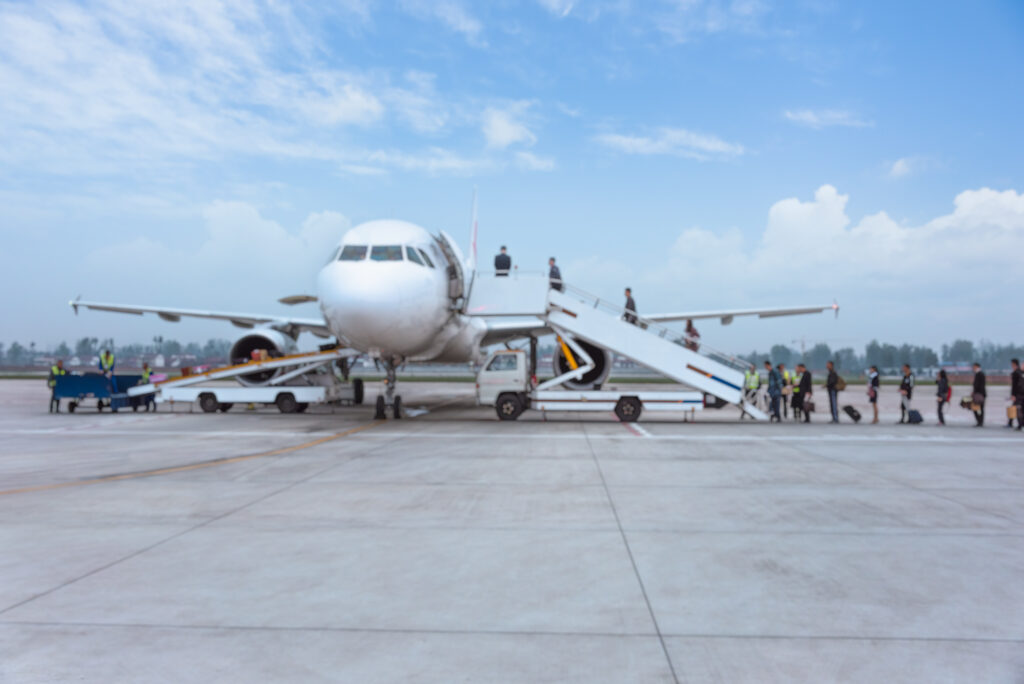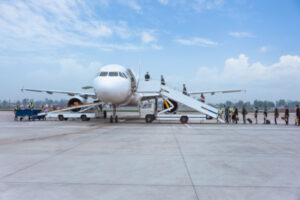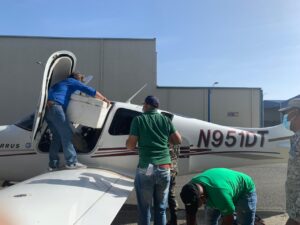The signing of the Open Skies Agreement with the United States last year was celebrated as a major achievement for Dominican aviation. The agreement opens the door for Dominican airlines to operate with greater freedom within the U.S., which means increased competition between Dominican and U.S. carriers. The Dominican Republic is a leisure-travel air market, so airfare price is the main point of competition.
Airlines compete based on many factors, one of the most important being the Cost per Available Seat Mile (CASM). Larger airlines reduce CASM through economies of scale, while smaller ones rely on maintaining minimal operating costs. Operational cost (CASM) + taxes + profit = the final ticket price.
Market Segmentation in Aviation
In economics, consumer sensitivity to the price of a good or service is defined as price elasticity of demand. Passenger air markets are generally segmented into: business travelers and leisure travelers.
Leisure travelers are more sensitive to ticket prices, while business travelers are less sensitive. This means that, while business travelers focus on service quality or schedule reliability, leisure travelers often base their decision primarily on ticket price.
The Dominican Republic, as a beach tourism destination, has an air market highly dependent on price elasticity of demand. Its main traveler segment is leisure tourism, and airfare is a key element of its competitiveness as a destination.
Impact of Taxes on Airfares
The International Civil Aviation Organization (ICAO), in its policies on taxation in international air transport (Doc. 8632), has expressed concern regarding the proliferation of new taxes in the aviation industry. It also highlights the notable negative impact this has on the development of air transport.
ICAO establishes that taxes collected from airline tickets must be used exclusively for the maintenance and improvement of a country’s civil aviation system—not for other government responsibilities. ICAO studies have shown that for every US$1 in taxes, the national economy loses US$2 due to reduced passenger demand and the indirect impact from loss of visitors.
Distinction Between Taxes and Charges
Another important area emphasized by ICAO and other international organizations is the distinction between taxes on air operations and operational charges. Costs such as ground handling (cleaning, ramp, passenger handling), airport security, among others, play a significant role in the final airfare.
Dominican Republic
Air transport is a fundamental part of our country’s economy, serving as the foundation on which tourism and much of our international trade have been built. In this sense, the Dominican Civil Aviation Institute (IDAC) is one of the government’s principal sources of tax revenue.
IDAC typically ranks 3rd or 4th in total collections, surpassed only by the General Directorate of Internal Taxes and the General Directorate of Customs. The taxes collected by IDAC range from the airline ticket tax (its largest source of revenue) to overflight charges on aircraft that often do not even land in the Dominican Republic.
The country charges an average VAT of 18% on airline tickets—about US$36 for a round-trip fare of US$200—matched only by Peru. Added to this are high fuel costs (among the highest in the region) and high ground-handling charges.
In a second part, we will address the impact this fiscal policy has on Dominican airlines as the country enters the Open Skies Agreement with the United States, as well as its ambitions to become a regional logistics hub.
Comparison of the Dominican Aircraft Fleet With the Region
The Dominican Republic currently has about four significant airlines, totaling roughly 20 aircraft. The largest is Arajet, with a fleet of 11 Boeing 737 MAX aircraft and plans to expand to approximately 30 within the next 2–3 years. The entire Arajet project is the most important Dominican airline initiative in national aviation history, representing a total investment of about US$3.6 billion upon completion of its planned expansion. Once that fleet size is reached, Arajet will position itself as a major regional player and the largest airline in the insular Caribbean, employing thousands with competitive salaries and benefits, and contributing significantly to the treasury.
But even then, the Dominican fleet will remain one of the smallest in the continent, requiring a strong focus on price competition and maintaining high efficiency in order to compete in North, Central, and South American markets. To illustrate the scale of the airlines in the region that compete with Arajet, here is a list of major carriers by fleet size:
- Wingo Colombia: 9
- SKY: 29
- Aerolíneas Argentinas: 82
- COPA: 103
- Viva Aerobus: 114
- Aeroméxico: 125
- Avianca: 128
- Volaris: 142
- GOL: 137
- Spirit Airlines: 195
- JetBlue Airways: 286
- LATAM: 326
- Southwest Airlines: 801
- Delta Air Lines: 987
- American Airlines: 992
- United Airlines: 1,037
Weaknesses in the Dominican Logistics-Hub Project
The term hub refers to a connecting point for goods and people traveling to another destination. Today, the world’s largest airlines—both passenger and cargo—operate under a hub-and-spoke model. The busiest passenger hub is Atlanta’s airport, the main base of Delta Air Lines; and the world’s largest air-cargo hub is Memphis International Airport, home of FedEx Express.
President Luis Abinader’s administration has established the creation of a logistics hub in the Dominican Republic as one of its economic priorities. This is an understandable objective given the country’s geographic location in the center of the Americas, and its extensive air and maritime activity as an island dependent on tourism. Arajet’s business strategy is precisely to use the Dominican Republic as an air hub, connecting passengers traveling between North and South America through our territory.
Where this government policy becomes disconnected from reality is in the lack of economic incentives to support such a hub, as the country is among those with the highest aviation taxes in the region, making it unattractive for airlines to establish operations here.
We must also remember that our country is surrounded by hubs that operate more efficiently and with greater organization than ours. Some of the relatively nearby air hubs include:
- Miami/Fort Lauderdale: American Airlines, Spirit, JetBlue
- Atlanta: Delta Air Lines
- Mexico City: Aeroméxico, Viva Aerobus, Volaris
- Panama: COPA
- Bogotá: Avianca, Wingo
Operational Costs
Airline operating costs include taxes, fuel, and additional expenses such as airport handling. In the case of major Dominican airports, we are among the most expensive in the continent. For example, while the average aircraft-handling charge at a Dominican airport is US$2,000, in Guatemala City it is only US$774.
Similarly, aircraft fuel—both airline jet fuel and general-aviation fuel—is among the most expensive in the continent. The average price of jet fuel in Dominican airports is US$3.10 per gallon, compared to US$2.39 in Buenos Aires (Ezeiza). In general aviation the disparity is even greater: Dominican 100LL averages US$12 per gallon, while in Puerto Rico (supplied from the same tanker ship) it is US$5.50 per gallon.
Attempts to make Dominican aviation more competitive have been weak so far. In 2023, President Abinader enacted Law 57-23 to promote national aviation, but it excluded general aviation (the educational engine of national aviation) and did not address the main taxes and operational charges that Dominican airlines must confront daily.
In summary, we are experiencing one of the greatest periods of growth in national aviation, with aspirations of becoming a regional hub, but facing major challenges in taxes and operational costs. If we want to succeed in this objective, we must reduce the size of our aviation institutional structure, streamline processes, and—above all—reduce taxes.




